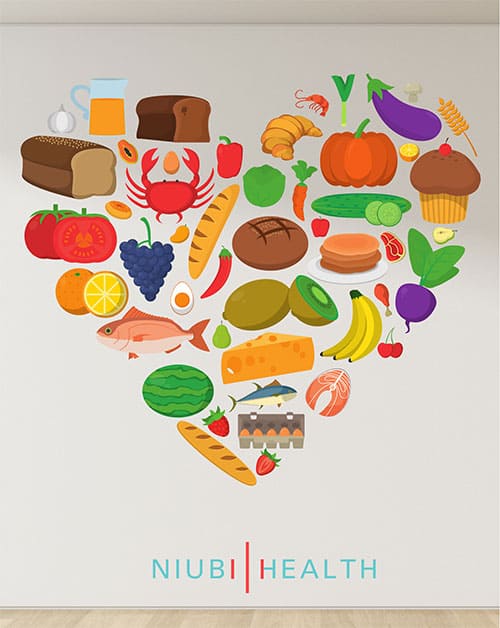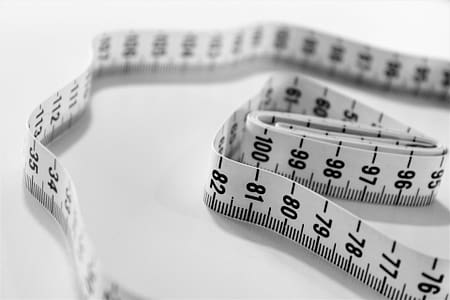This is a short and concise information pack on macronutrients. It is meant to give you a solid foundational understanding of what these nutrients are, and how they work in the body. At the end of this article you should be confident enough to make better informed nutritional choices based on your new knowledge of the macros.
The macronutrients in this article are explained in light of their unique roles in excess fat loss. Please see disclaimer* below.
How is fat broken down in the body?
Human muscle burns body fat for energy. Therefore the bigger, stronger and leaner your muscles are, the more readily they can consume stored, excess fat.
Imagine your body as a car. Your engine is your muscle mass, the body of the car is the excess fat weight. The bigger, stronger and leaner your engine is, the more effective and faster it will be at breaking the excess fat down, to build a “new body”.
To start your fat loss journey you need to understand that, without a healthy proportion of lean muscle mass, you will not effectively lose excess fat weight.
More lean muscle = less body fat
If you want to lose weight you CANNOT skip your proteins.
There are medical conditions which can prevent excess fat loss to a large degree. These are not discussed here. This article is for the general population without medically induced fat loss prevention conditions. Please consult your healthcare practitioner if you believe this is your concern.
Proteins: The muscle building machine
In short, animal meat is protein (and made of protein). Human and animal tissue such as muscle, organs, eggs, skin, blood, to name a few, are all made of proteins and are protein.
Other protein substances in animals and humans include hormones, neurotransmitters, enzymes and other chemical substances. But these substances are not considered for nutritional consumption for weight loss purposes.
A protein is a substance made up of amino-acids. If a house represents a protein, then the amino acids are the bricks in the walls. There are 21 different types of amino acids (bricks) that make up human and animal organs and tissues (protein). Nine of the 21 amino acids are essential, meaning that the body cannot make them, and so we must get them from the diet. It is the different combinations of these amino acids that give rise to different protein structures in the body, for example: muscle tissue, skin tissue, blood tissue etc.
Plant based proteins are lacking in many essential amino acids which are needed to make up human muscle. This means plant proteins are NOT a high quality protein source to be considered for human tissue growth and repair. Yes you can survive on a plant-based diet alone but there are many draw-backs and steady muscle growth is one of them.
Meat makes meat, therefore if you want more muscle, eat muscle (animal based protein). Many plant proteins come with a high starches content. The value of protein received from plants is negated by the high amount of starch consumed with the plant.
Your number one fat burning, weight-loss inducing, strength providing macronutrient is PROTEIN (the animal kind, not plant based**).
Carbohydrates: Energy nutrient
Carbohydrates are made up of sugar molecules. Going back to our house analogy: If a carbohydrate is viewed as a house then sugar molecules are the bricks in the wall. There are various different types of sugars but, for all intents and purposes, we shall just refer to them collectively as “sugar”.
Carbohydrates are the energy nutrient when considered in terms of weight loss. The basic unit of a carbohydrate, the sugar molecule, drives the mitochondria in our cells, making 1 unit of energy. Now imagine a house full of sugar molecules (a starch) being consumed.
The body needs energy to build, repair tissue, grow, and maintain brain function, just to name a few. Carbohydrates are important, obviously, but how much is necessary?
When excluding all forms of exercise, the average daily intake of carbohydrates, per meal, should be less than 10g for adults. This seemingly meager amount of carbohydrates is enough to fuel the body and brain in a sedentary state. It is also the lowest amount of carb intake to ensure no excess carbohydrates are converted into fat. Ten grams per meal is also a diabetic-friendly intake.
Fats: Long term energy storage
The primary function of fat is to keep you insulated in times of extreme cold, to prevent starvation during famine as well as organ and fetal protection during pregnancy. Excess fat is stored for use in stressful times. Fat has many other crucial, yet smaller roles, but they won’t be discussed here as we are only looking at fats as a function of weight loss.
Fat has the highest energy delivery of all the macronutrients. Fats are readily stored and designed to be quickly put away into adipose tissue. You only need this energy in a famine or severely cold climates.
For weight loss purposes, fats are not necessary.
But what about ketosis? Yes, consuming extra fats may induce fat loss, BUT for a period of time only, and then only when no carbohydrates are consumed with the fats. Why? The effect of eating carbohydrates and fats together is a signal to the body that the carbs are the quick and easy energy source, while the fats must then be stored for a time of stress as fats are not easily metabolized. Sugars are used as fuel, fats are used as storage when these 2 nutrients are consumed together continuously, for prolonged periods of time.
Take-home message
WHen weight loss is considered, the primary macronutrient to consume is protein. Carbohydrates are used sparingly but are the preferred choice for exercise fuel. Fats are there for times of stress, famine and organ protection.
*Disclaimer: For fear of making this a biochemistry lecture, many laymans terms and analogies have been used to better relay advanced chemistry and medical terms. It should be noted that only the most important and predominant functions of each macronutrients, relating to weight loss, has been explored here. Macronutrients are extremely complex, have many crucial primary- and subfunctions, and each macro plays a vital role in the human body.
**Plant based proteins require many “protein complementing” varieties to create the high quality protein score needed for muscle growth and tissue repair. High muscle growth on plant based foods may be as much as an animal protein rich diet, however it requires a lot of sourcing of different proteins from different plants.




